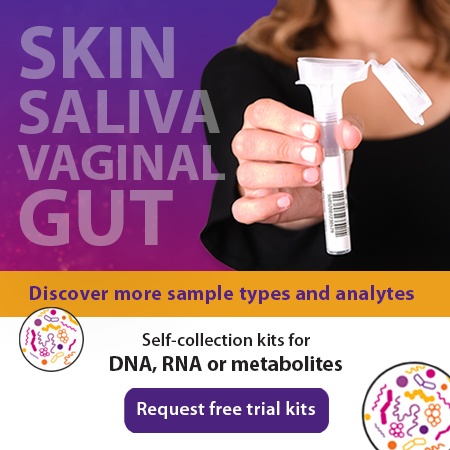2016-06-15
You’ve likely been hearing a lot about the gut microbiome lately, and its links to numerous diseases and conditions such as obesity, allergies and mental health. However, our bodies are completely covered with microorganisms, and many other communities are starting to garner attention. Is it possible that there is another group of bacteria with the potential to influence our health to the extent of the gut microbiome?
The vaginal microbiome is one of these compelling new areas of microbial research. The mysteries of this microbiome are only beginning to be discovered, but we are already finding connections with many areas of health (for both women and men!). The vaginal microbiome is the first line of defense for the female reproductive tract. Changes to these bacterial communities have been linked to bacterial vaginosis, pelvic inflammatory disease, HIV infections, pre-term delivery and miscarriages.
Healthy vaginal microbiome
Before we can determine how the vaginal microbiome influences disease, we must first determine what a healthy vagina actually is. This has been an area of debate for years now, and is still unclear. Healthy vaginas are typically described as having an abundance of Gram-positive rods, which are generally members of the genus Lactobacillus. The vaginal bacterial communities are dominated by Lactobacillus iners, L. crispatus, L. gasseri, or L. jensenii. These Lactobacillus sp. are thought to play key protective roles by lowering the environmental pH through lactic acid production and by producing various bacteriostatic and bacteriocidal compounds [1].However, the composition of the vaginal microbiome largely differs by age and ethnicity [1]. Some vaginal communities are relatively stable, while others can change significantly over very short periods of time [2]. Also, some women can have vaginal microbiomes that are vastly different from the above definition, without any health effects. The combination of these factors makes studying the vaginal microbiome a challenge!
When the abundance of Lactobacillus seen in a healthy vaginal microbiome decreases, bacterial vaginosis can occur. This is the most commonly reported microbiological syndrome in women of childbearing age. Bacterial vaginosis can increase a woman’s chance of acquiring HIV, HPV, and other sexually transmitted infections, and passing them on to partners. Additionally, vaginal bacteria are able to ascend into the upper reproductive tracts of pregnant women, colonizing the placenta and potentially affecting infant health [3]. For example, maternal vaginal Group B streptococcus colonization during the third trimester has been linked with greater infant aortic intima-media thickness, increasing the risk of future cardiovascular disease [4]. The diversity of the vaginal microbiome can be an intriguing topic for couples trying to conceive as well, as it has been linked to the likelihood of preterm delivery and the chances of in vitro fertilization success [5, 6, 7].
Recently, many links have been made between the gut microbiome and conditions ranging from asthma to depression. A mother’s vaginal microbiome actually plays a large role in establishing her children’s gut, skin, and oral bacterial communities. Babies born by caesarean section are more likely to have allergies, asthma, obesity and diabetes than vaginally delivered babies [8]. So, should we be “seeding” these babies with vaginal bacteria? A pilot study has been conducted to test this idea, where maternal vaginal bacteria were transferred to c-section delivered infants. When the bacteria were rubbed on the faces and bodies of the babies, their microbiomes were partially restored to those of vaginally born infants, and the compositions were still maintained at 30-days post delivery [9].
Research into the vaginal microbiome could lead to many positive changes for the health of women, men and children. The use of new bacterial stabilization methods and next generation sequencing techniques, such as 16S rRNA amplicon sequencing, will give scientists the tools to unearth new information about the diverse effects these bacteria can have on our lives.
References
1. Ravel, J et al. (2011). Vaginal microbiome of reproductive-age women.Proceedings of the National Academy of Sciences, 108(Supplement 1), 4680-4687.
2. Gajer, P et al. (2012). Temporal dynamics of the human vaginal microbiota. Science translational medicine,4(132), 132ra52-132ra52.
3. Onderdonk, A. B et al. (2016). The human microbiome during bacterial vaginosis.Clinical microbiology reviews, 29(2), 223-238.
4. McCloskey, K et al. (2016). Perinatal microbial exposure may influence aortic intima-media thickness in early infancy.International Journal of Epidemiology, dyw042.
5. Hyman, R. W et al. (2013). Diversity of the vaginal microbiome correlates with preterm birth.Reproductive Sciences, 1933719113488838.
6. Romero, R et al. (2014). The composition and stability of the vaginal microbiota of normal pregnant women is different from that of non-pregnant women.Microbiome, 2(1), 1.
7. Haahr, T et al. (2016). Abnormal vaginal microbiota may be associated with poor reproductive outcomes: a prospective study in IVF patients.Human Reproduction, 31(4), 795-803.
8. Sevelsted, A et al. (2015). Cesarean section and chronic immune disorders.Pediatrics, 135(1), e92-e98.
Dominguez-Bello, M. G et al. (2016).
9. Partial restoration of the microbiota of cesarean-born infants via vaginal microbial transfer.Nature medicine.


